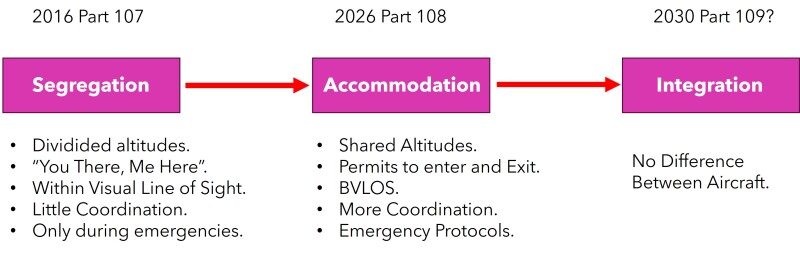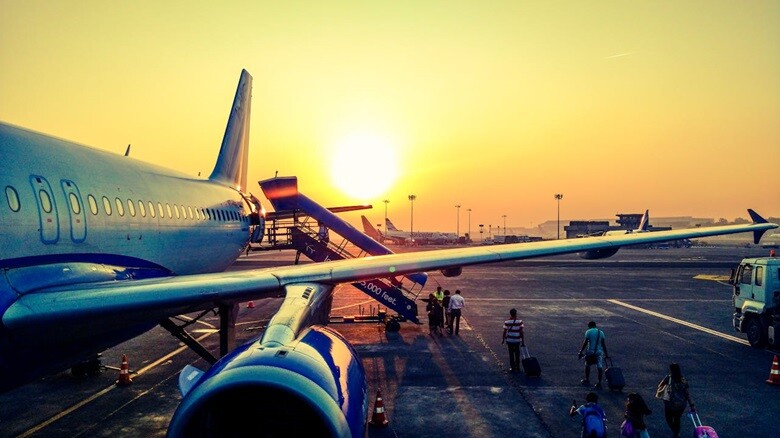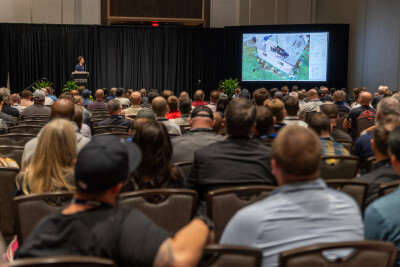The intent of this question is meant to promote a healthy conversation within our industry about the existing regulatory approach. There are important distinctions between drones and traditional aircraft like the Boeing 737, where the pace of innovation and the underlying technology are vastly different.
In a recent article in Commercial UAV News, our friend Erik Mintz, Director, Mobility Infrastructure at Mitsubishi Electric US, makes a compelling case that drones are closer to computers than aircraft: “While drones are specialized in their ability to fly and navigate through space using specific hardware and software, at their core, they are indeed computers.”
Given that drones are fundamentally more akin to flying computers, which undergo rapid software-driven changes, applying the same regulatory framework as for manned aircraft may indeed prevent the drone industry from reaching its full potential.
In 2016, after the release of Part 107, I decided to apply for my uncrewed aviation license and, after a few hours of reading the requirements and passing a short test on my computer, I received my license. I had never in my life touched or flew a drone, but I was now an FAA-qualified pilot. How come a person that has no idea how to operate a non-piloted aircraft is now certified to fly one?
That question made me think that drones are not really aircraft in the way we, and the FAA, understand the term. And even though they are piloted or supervised remotely, the fact that I could be Pilot in Command (PIC) of a vessel of which I have no knowledge made me uncomfortable and generated the title of this article.
To obtain my Part 61 private pilot’s license, I had to study for six months a variety of topics, most of which overlapped with the requirements for Part 107, but at the same time, I had to spend about 60 hours of flying time acquiring the necessary skill to operate the controls of a very simple aircraft, a Cessna 150. But, like every other pilot in the world, it is a crawl-walk-run process, and we all go through it slowly and patiently. When you board an Airbus 380 with two decks, a wingspan of 262 feet, and up to 560 tons of weight, rest assured that the pilot at the controls started, decades ago, in a small, single engine plane with zero hours of experience.
If a drone pilot is not required to have any experience flying uncrewed aircraft in order to have a license, are we really talking about the same industry? In defense of the FAA, we must argue that in the case of non-piloted aviation the person in charge of the flight, the PIC, is not necessarily the same individual operating the controls. Part 107 specifies that the PIC plays a particular role in which he/she is responsible for the safety of uncrewed operations and that includes always maintaining the drone in line of sight and making sure there are no conflicts with crewed aviation or terrain obstacles.
The issue is that these “flying computers” will potentially occupy the same airspace as traditional aircraft with hundreds of passengers on board and that creates a potential for disaster that needs to be regulated. But is it necessarily by the same federal agency?
Now that we have made our case for the human component of the argument, let us analyze the hardware side of the new industry. Drones are very simple flying machines, and most upgrades and improvements are made through the installation of better software and, perhaps, increases in the number of sensors to improve efficiency and safety.
On the other hand, to make changes or improvements to a traditional aircraft, the operator must go through a rigorous process known as Supplemental Type Certificate (STC). According to the FAA, “A supplemental type certificate (STC) is a type certificate (TC) issued when an applicant has received FAA approval to modify an aeronautical product from its original design. The STC, which incorporates by reference the related TC, approves not only the modification but also how that modification affects the original design.”
These STCs are notoriously slow and costly, and the FAA has been reviewing them for decades, sometimes approving and sometimes requesting improvements, but the industry is weary of them because of the onerous process that they ensue. Now just imagine having to go through an STC every time there is a new software version of the flight controller, or a new sensor is added to a 250-gram drone.
We know that crewed and uncrewed aviation will eventually be one industry— “Aviation”—but is it mandatory to have only one agency regulating and supervising it?

It is for all of the above reasons that we ask the question: Is the FAA the right federal agency to regulate drones? We do not know the correct answer but giving the FAA this responsibility just because drones fly is oversimplifying a very complex issue. The FAA has an admirable record of safety for the flying public, and perhaps adding the extra burden of having to integrate drones to the NAS is not a welcome distraction.
Perhaps a better solution will be to divest the entire FAA UAS team into a new federal agency, under the US Department of Transportation (USDOT) that would regulate uncrewed pilots and aircraft certification and would coordinate with the FAA the operational side of the industry, when both types interact. Complementing this new agency will require some new skillsets to account for rapid software updates, cybersecurity concerns, and data management—all areas where technology expertise is crucial. Such an approach would allow the FAA and other regulatory bodies to adapt to the unique dynamics of the drone industry while maintaining safety standards.
This is not the first time in recent history that extraordinary measures have been taken to remedy a situation to improve safety and clarity. After 9/11, deficiencies were found in the coordination between public safety agencies, so the Department of Homeland Security was born. Perhaps it is time to rethink the traditional approach to an industry that is changing faster than the current federal agency can adapt to.















Comments